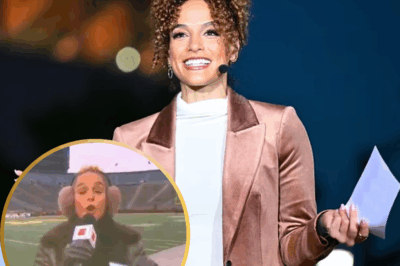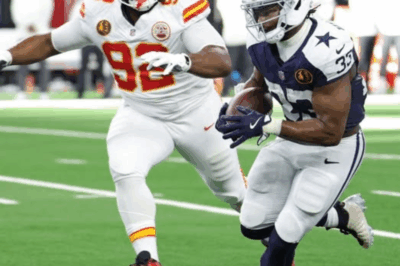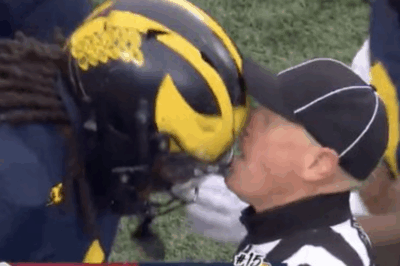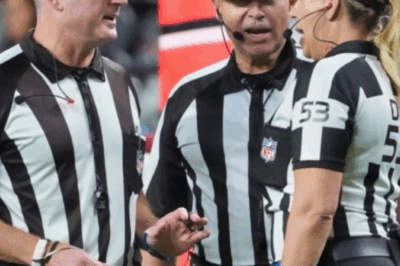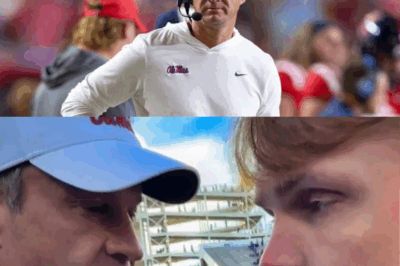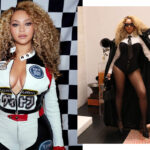Danica Patrick just DESTROYED the NFL over their Super Bowl 60 Halftime pick. Her rant about Bad Bunny is going viral—you have to hear this!
In the world of sports and entertainment, few events garner as much attention and anticipation as the Super Bowl.
Known for its thrilling football action, star-studded commercials, and unforgettable halftime performances, the Super Bowl is not just a game—it’s a cultural phenomenon.
Every year, millions of viewers tune in worldwide to witness this grand spectacle, and the halftime show, in particular, has become a highlight that often sparks conversations well beyond the game itself.
This year, however, the announcement of the halftime performer for Super Bowl 60 has ignited a firestorm of controversy, debate, and social media buzz.
The NFL’s decision to feature Bad Bunny—a globally renowned Latin trap and reggaeton artist—as the headline performer has divided opinions across the sports and music communities.
Among the most vocal critics is none other than Danica Patrick, the legendary former NASCAR driver and sports personality, who didn’t hold back her feelings about the choice.
The Context: Why the NFL’s Choice of Bad Bunny Is Controversial

Super Bowl halftime shows have historically been a mix of musical legends, pop icons, and occasionally, culturally relevant artists who push boundaries and reflect the diverse fabric of American society.
From Michael Jackson and Madonna to Beyoncé and Lady Gaga, the NFL has often selected performers who resonate broadly with audiences and uphold a certain cultural cachet.
In recent years, the league has attempted to diversify its lineup, aiming to appeal to a broader, more global audience.
This year, the NFL announced that Bad Bunny would headline the halftime show, marking a significant shift towards Latin and urban music genres.
While many fans welcomed this move as a celebration of cultural diversity, others argued that it diverged from traditional expectations and raised questions about the event’s identity.
Some critics questioned whether Bad Bunny’s style and musical repertoire were appropriate for such a historic and family-friendly event.
Others expressed concern over whether the choice was driven more by marketing strategies and demographic targeting than artistic merit.
Regardless of the debate, the announcement sparked widespread discussion, with opinions split sharply along cultural, generational, and musical lines.
Danica Patrick’s Bold Response: No Filter, No Hesitation
Danica Patrick, a trailblazing figure in motorsports and a prominent sports personality, took to social media to voice her unfiltered thoughts.
Known for her candidness and no-nonsense attitude, Patrick’s reaction was swift, direct, and unapologetic.
In her social media posts, she expressed her disappointment and frustration with the NFL’s decision.
She criticized the league for what she perceived as a departure from the traditional values and standards associated with the Super Bowl.
For Patrick, the choice of Bad Bunny symbolized a shift away from the event’s core identity—an event rooted in American sports culture, entertainment, and family-friendly appeal.
“I’m honestly disappointed,” Patrick wrote in one of her tweets. “Super Bowl is a celebration of American football, entertainment, and tradition.
Not sure why we’re veering so far off course with these halftime choices. It’s about time we respect the history of this event.”
Her comments quickly gained traction, sparking a wave of support from fans who shared her sentiments, as well as criticism from those who believed her reaction was out of touch or overly conservative.
The Broader Cultural Debate
Danica Patrick’s outspoken stance is emblematic of a larger cultural debate surrounding the Super Bowl halftime show.
On one side, proponents argue that the event should evolve and reflect contemporary musical trends, embracing diversity and innovation.
They see the inclusion of artists like Bad Bunny as a positive step toward representation and cultural inclusivity.
On the other side, critics like Patrick emphasize the importance of maintaining tradition and cultural coherence.
They argue that the Super Bowl is a uniquely American event, and its halftime show should prioritize artists who embody the spirit and values of the occasion.
For them, the choice of Bad Bunny raises questions about the event’s identity and whether it’s drifting too far from its roots.
This debate is further complicated by the broader societal conversations about cultural appropriation, representation, and the commercialization of entertainment.
Some see the NFL’s decision as a progressive move, acknowledging the growing influence of Latin and urban music on mainstream culture.
Others perceive it as a marketing tactic aimed at appealing to specific demographics, potentially at the expense of artistic integrity.
The Reaction from the Music and Sports Communities

The announcement and Danica Patrick’s reaction have sparked reactions from various quarters.
Music fans, especially those who follow Latin and urban genres, largely welcomed the news. Many praised the NFL for showcasing a diverse artist and expanding the scope of the halftime show.
However, some industry insiders and traditionalists voiced concerns.
Critics argued that while diversity is important, the selection process should prioritize artistic quality and cultural relevance rather than just demographic appeal.
They pointed out that the Super Bowl has historically served as a platform for legendary performances that transcend genres and generations.
In the sports community, reactions have been mixed. Some athletes and sports personalities echoed Patrick’s sentiments, emphasizing the importance of tradition and cultural continuity.
Others supported the NFL’s decision, highlighting the importance of evolving with the times and embracing new cultural influences.
The Significance of the Halftime Show in Cultural and Social Context
The Super Bowl halftime show is more than just entertainment; it’s a cultural statement that reflects societal values, trends, and shifts.
Over the years, it has served as a mirror of changing attitudes toward race, gender, and cultural identity.
For example, Beyoncé’s 2013 performance was celebrated for its empowerment message, while Lady Gaga’s 2017 show was praised for its spectacle and inclusivity.
More recently, artists like The Weeknd and Shakira have used their performances to highlight social issues and cultural diversity.
In this context, choosing Bad Bunny can be seen as part of a broader effort to recognize and celebrate Latin music’s global influence.
It also marks a shift toward more urban and contemporary genres, which resonate strongly with younger audiences.
However, critics like Danica Patrick argue that the core purpose of the halftime show should remain rooted in entertainment that appeals to a broad, multi-generational audience—something they believe might be compromised with more niche or culturally specific acts.
The Future of the Super Bowl Halftime Show
As the debate rages on, one thing is clear: the Super Bowl halftime show continues to evolve, reflecting broader societal changes and cultural dynamics.
The NFL faces a delicate balancing act—honoring tradition while embracing innovation.
The choice of Bad Bunny signals a willingness to push boundaries and explore new musical territories.
Whether this approach will resonate positively or spark further controversy remains to be seen. What is certain, however, is that the conversation surrounding the halftime show is unlikely to fade away soon.
As the event approaches, fans, critics, and cultural commentators will be watching closely to see how the NFL navigates this complex landscape.
Will it prioritize tradition, or will it continue to adapt to the changing cultural tides? And, perhaps most importantly, how will personalities like Danica Patrick influence the ongoing discourse?
A Reflection of Societal Values and Cultural Shifts
Danica Patrick’s outspoken reaction to the NFL’s announcement of Bad Bunny as the Super Bowl 60 halftime performer encapsulates a broader cultural tension—between tradition and progress, between heritage and modernity.
Her candidness has sparked important conversations about what the Super Bowl represents and how it should evolve in a diverse, multicultural society.
Whether one agrees with her perspective or not, her voice underscores the importance of dialogue and debate in shaping the future of one of the world’s most watched sporting and entertainment events.
As the countdown to Super Bowl 60 continues, all eyes will be on the NFL’s choices and the reactions they provoke, reflecting the ongoing evolution of American cultural identity.
News
VIDEO: ESPN Reporter Jess Sims Uses Explicit Language While Covering Cold Weather at Michigan-Ohio State Game: A Viral Moment Sparks Debate
ESPN Reporter Jess Sims Uses Explicit Language While Covering Cold Weather at Michigan-Ohio State Game: A Viral Moment Sparks Debate…
“Tony Romo just broke the NFL’s number one rule. His explosive take on the Cowboys’ win over the Chiefs reveals the one truth the league is desperately trying to silence. You won’t believe what he said.”
Tony Romo Reveals What the NFL Is Too Afraid to Admit About the Dallas Cowboys After Their Stunning Chiefs Victory…
A Super Bowl champion just dropped a bombshell, claiming the NFL RIGGED the Cowboys-Chiefs game. You won’t believe why.
Super Bowl Champion Alleges Rigging in Cowboys-Chiefs Game Over Controversial Officiating on Thanksgiving In a startling development that has sent…
Shocking Incident in College Football: Michigan’s Jaishawn Barham Headbutts Referee During Intense Ohio State Clash
Shocking Incident in College Football: Michigan’s Jaishawn Barham Headbutts Referee During Intense Ohio State Clash In the world of college…
The refs didn’t just make a bad call—they allegedly stole the game. Fans are now demanding a full-scale investigation into the Thanksgiving officiating crew. What did the league just try to hide?
The refs didn’t just make a bad call—they allegedly stole the game. Fans are now demanding a full-scale investigation into…
VIDEO: It got PHYSICAL after the Egg Bowl! Lane Kiffin was caught on camera squaring up with a reporter. You have to see the video.
VIDEO: It got PHYSICAL after the Egg Bowl! Lane Kiffin was caught on camera squaring up with a reporter. You…
End of content
No more pages to load

